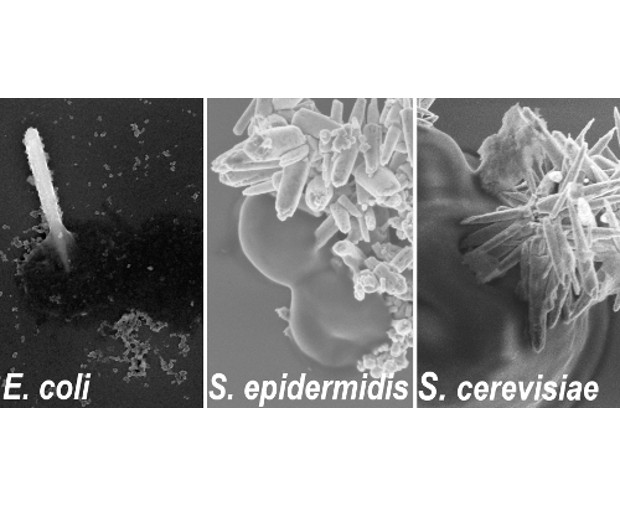
The main goal of our research was to investigate influence of mechanical stress induced by nanoparticles of various shape. We examined the effect of ZnO nanoparticles of nearly spherical shape and ZnO nanorods (which corresponds to the shape of nanopillars present on wings of cicada) on living organisms. In our studies we tested the very broad spectrum of studied organisms, starting from relatively simple Prokaryote (Gram-positive and Gram-negative bacteria strains) and Eukaryote (yeasts) to more complex eukaryotic systems like cancer cell lines (four different types) and peripheral blood mononuclear cells purified from human plasma. In almost all cases nanorods were more damaging comparing to nanoparticles. This was due to increased probability of mechanical damage caused by nanorods upon punctuation of the cell wall and membranes. Zinc oxide was chosen as material which is a major candidate for preparation of biocompatible nanoelectronics. There is a growing interest in preparation of devices cooperating with living organisms. Such devices might be connected directly to the brain of seeing- and hearing-disabled individuals in order to recover lost abilities. Nanotechnology should be utilized to maximize the efficiency of the implants. To provide the guidelines for design of such devices, the geometrical attributes need to be optimized. Obtained results can be applied in the drug delivery systems development, implantology, cybernetics and transplantology.